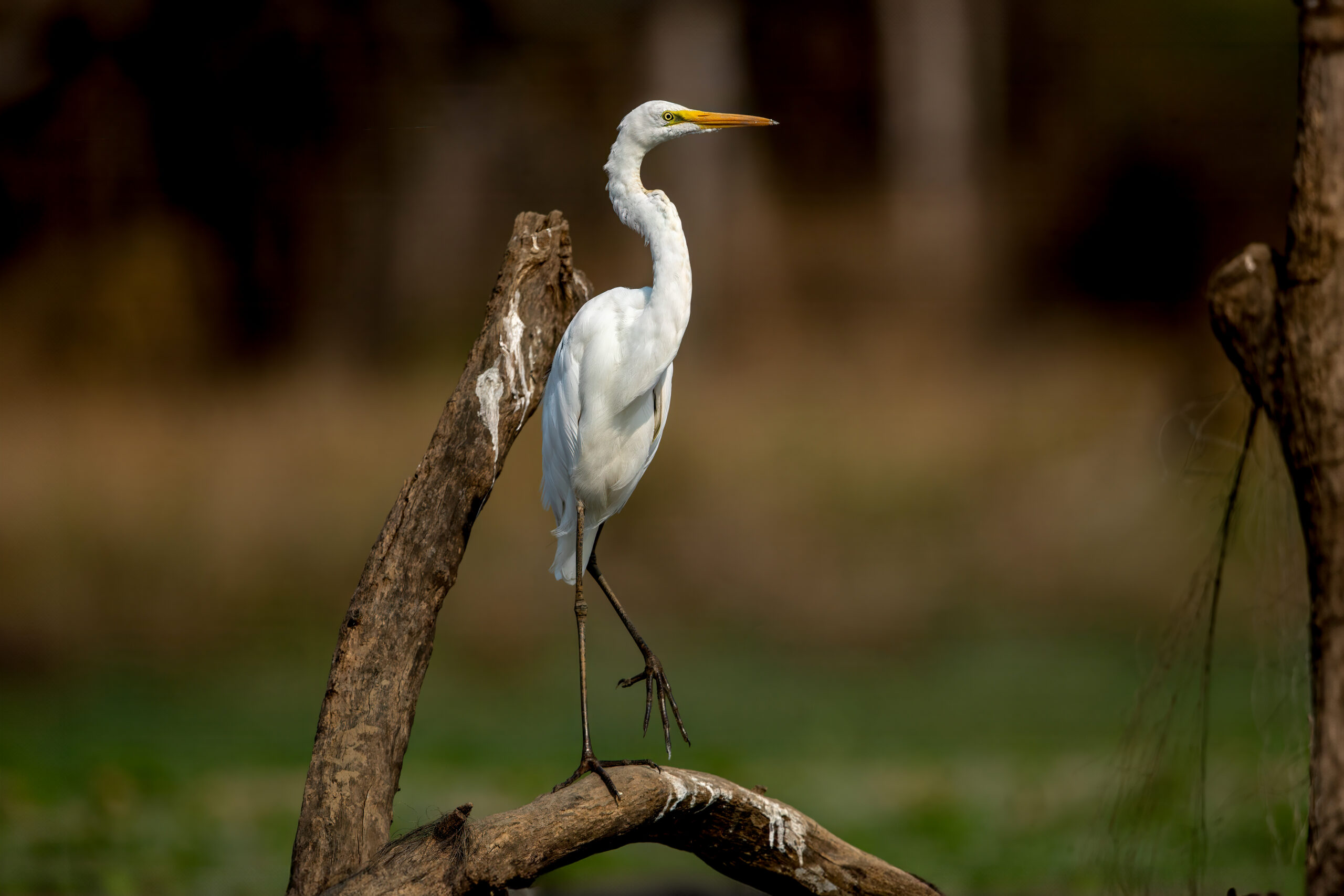Description
The striated heron (Butorides striata) is a small, stocky heron with a broad range across the tropics and subtropics, including parts of Africa, Asia, Australia, and South America. It measures around 35–48 cm (14-19 in) in length and has a wingspan of 52-60 cm (20-24 in). This heron is typically characterized by its blue-grey upperparts with darker wings, white streaking along the center of its front, and a blackish crown with a crest. The legs are greenish-yellow, and the bill is long and sharp, well-adapted for fishing.
It is very similar to the closely related green heron (Butorides virescens), which is native to North and Central America. The green heron can be distinguished from the striated heron by having a maroon-colored neck and a more greenish tinge to its back and wings. These two species were once considered conspecific.
Diet & habitat
The striated heron is commonly found in a variety of wetland habitats, including mangroves, riverbanks, swamps, and coastal lagoons. It is particularly fond of areas with dense vegetation near water, where it can easily hunt. Its diet primarily consists of small fish, crustaceans, insects, and amphibians. The striated heron is a patient and strategic hunter, often using a technique known as “bait fishing.” This involves dropping insects or other small objects onto the water’s surface to lure fish within striking distance. This behavior is a fascinating example of tool use in birds.
Behavior
The striated heron is generally a solitary bird, although it may be seen in pairs during the breeding season. It is a secretive species, often staying hidden among the dense vegetation near its feeding grounds. When disturbed, it tends to fly low over the water with slow, deliberate wingbeats.
This heron is known for its crepuscular activity, being most active during dawn and dusk. It is also known for its distinctive calls, a series of sharp, rapid “skyow” sounds that can be heard mainly during flight or when alarmed.
Nesting
The breeding season for the striated heron varies depending on its geographic location but generally occurs during the wet season when food is abundant. The species builds a small, flimsy nest out of sticks, typically placed in a tree or shrub near water. The female lays 2-5 pale greenish-blue eggs, which are incubated by both parents for about 20-25 days. The chicks are altricial, meaning they are born helpless and require extensive parental care. Both parents feed the chicks by regurgitation, and the young fledge about 30-35 days after hatching.
Status
The striated heron is listed as a species of least concern by the IUCN. Its wide range and stable population suggest that it is not under immediate threat. However, like many wetland species, it could be impacted by habitat loss due to urbanization, pollution, and climate change.








